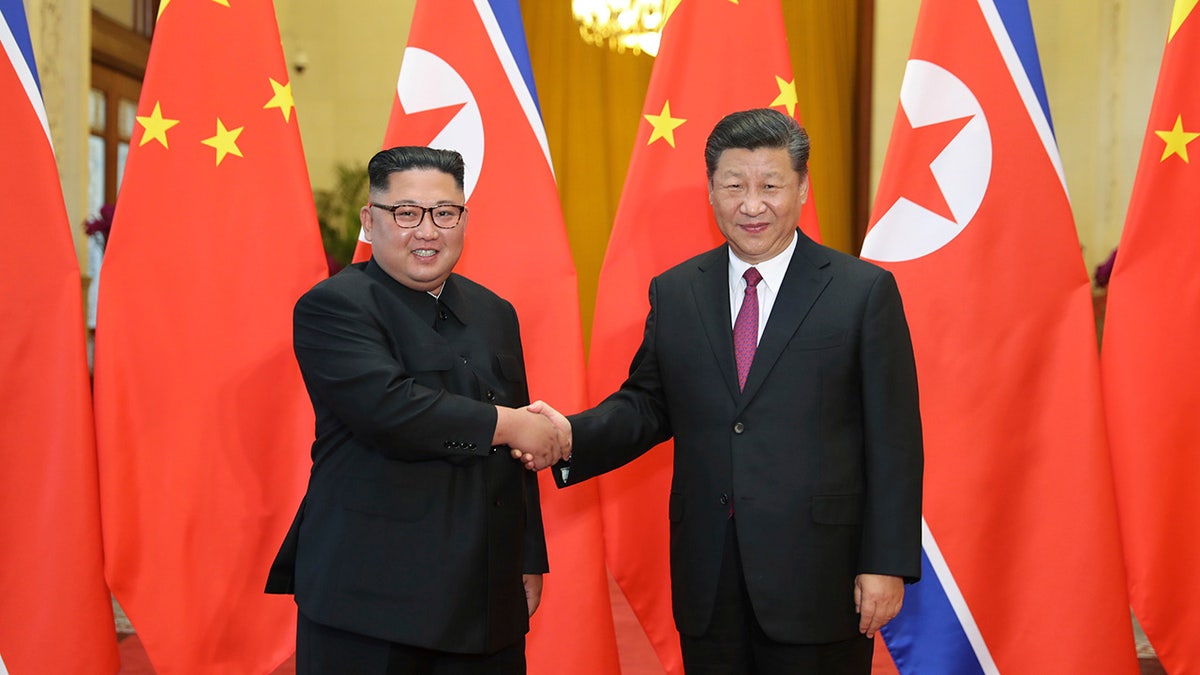Biden talked relationship with North Korea during event with South Korea
'Special Report' All-Star panel discuss the president's answers on dictator Kim Jong-Un
SEOUL, South Korea – Kim Jong Un, the 38-year-old dictator of North Korea, has already crossed a U.S. red line with an intercontinental ballistic missile (ICBM) test in March and worries mount that in the coming days and months his next test could be a nuclear one. These moves come at a time when his country’s economy has been staggered by the U.S. and U.N. led economic sanctions and an outbreak of the coronavirus.
The hermit kingdom conducted its 17th round of missile testing last month – including an ICBM system test last week. In total, it has fired 29 missiles this year alone and officials in the administration are concerned that Kim is readying his military for a seventh nuclear test. It’s believed that his regime is in the final stages of preparation at its Punggye-ri nuclear site.
WHAT CHALLENGES IS BIDEN ADMINISTRATION FACING WITH NEW SOUTH KOREAN ADMINISTRATION?
Three months after President Biden took office, the White House announced its new approach to North Korea, one centered on a "calibrated and practical approach" while maintaining the complete denuclearization of the Korean Peninsula as its primary goal, after completing a months-long review of its North Korea policy.

People stand by a TV screen showing file footage of North Korean leader Kim Jong Un, during a news program, at the Seoul Railway Station in South Korea on Aug. 2, 2019. (AP Photo/Ahn Young-joon, File)
Meanwhile, North Korea has maintained its historically hostile "strength to strength" policy against the U.S., and Kim seems to be working on that assumption when it comes to the Biden administration. Kim's wish is for his country to be recognized as a legitimate nuclear-weapon state by the U.S. and the international community.
NORTH KOREA FIRES BALLISTIC MISSILE AFTER MAKING NUCLEAR THREATS
During his speech at a military parade on April 25, Kim reiterated the importance of strengthening nuclear power, showing his will to keep improving his nuclear weapons regardless of new economic sanctions that could follow from the United States and the United Nations as a countermeasure. He also opened the possibility of using his nuclear weapons as a preemptive measure against his adversaries, but experts do not see the possibility of Kim firing his missiles toward the U.S. mainland in a preemptive strike.
Observers believe the ultimate intention of the North’s nuclear and ballistic missile tests is to raise the ante at the negotiating table so Kim can draw more bargaining chips from Biden in exchange for lifting the economic sanctions if the nuclear talks are renewed.
NORTH KOREA TESTS SUSPECTED SUBMARINE-LAUNCHED MISSILE
Currently, North Korea’s Hwasong-14, Hwasong-15 and Hwasong-17 ICBMs are what U.S. officials perceive as a direct threat to the U.S. as those missiles are believed to be able to reach the mainland. The Hwasong-17, the North’s newest ICBM, is still in development while the other older Hwasong ICBMs are what have already been developed, according to North Korea.

This photo provided by the North Korean government shows what it says is a test launch of a hypersonic missile in North Korea on Jan. 5, 2022. (Korean Central News Agency/Korea News Service via AP)
"Could launch and would launch are two very different questions," said Jenny Town, a senior fellow at the Stimson Center, and the director of Stimson's 38 North Program. Town said that although the North "would not launch missiles at the U.S. unprovoked or as a first strike," the missiles are capable of reaching the U.S. mainland.
Due to the North’s limited reports on the performance of its missile programs, it is highly challenging for outside experts to understand how accurate or successful the North’s earlier missile systems are.
If Hwasong-17 is successfully developed, it would be able to fly toward the U.S. while carrying multiple nuclear warheads. However, as Town stated, North Korea won't attempt to launch the missiles preemptively toward the U.S. but rather use them for its self-defense.
"Kim will continue to develop and test advanced military capabilities, but he is unlikely to use them unless he is faced with loss of control, and he has no other options for trying to ensure regime survival," said David Maxwell, a senior fellow for the Foundation for Defense of Democracies in Washington.

Chinese President Xi Jinping greets North Korean leader Kim Jong Un at the Great Hall of the People in Beijing on June 19, 2018. (Ju Peng/Xinhua via AP, File)
China and Russia, both permanent members of the U.N. Security Council, have opposed U.S. attempts at the world body to add new economic sanctions over the North’s ICBM tests this year. Under China’s leverage in the region, North Korea’s missile programs have steadily developed, leading some experts to question the effectiveness of economic sanctions intended to deter North Korea’s missile developments.
CLICK HERE TO GET THE FOX NEWS APP
With China as its biggest trading partner and closest ally, North Korea is economically dependent on Beijing. Regarding the North’s missile tests, however, China’s leverage has not worked to prevent Pyongyang from crossing the red line set by the U.S. in March as it has so far tested its ICBM system more than three times this year.
"Even though the North’s nuclear and missile capabilities are mainly to deter a strike from the U.S. or South Korea, they also allow North Korea to deter any attempt from China to influence its decisions," said Ramon Pacheco Pardo, a professor of international relations at King's College London. "I think that Beijing's uneasiness with Pyongyang's nuclear tests shows that North Korea has pursued this, and its missile programs regardless of China's views."






















